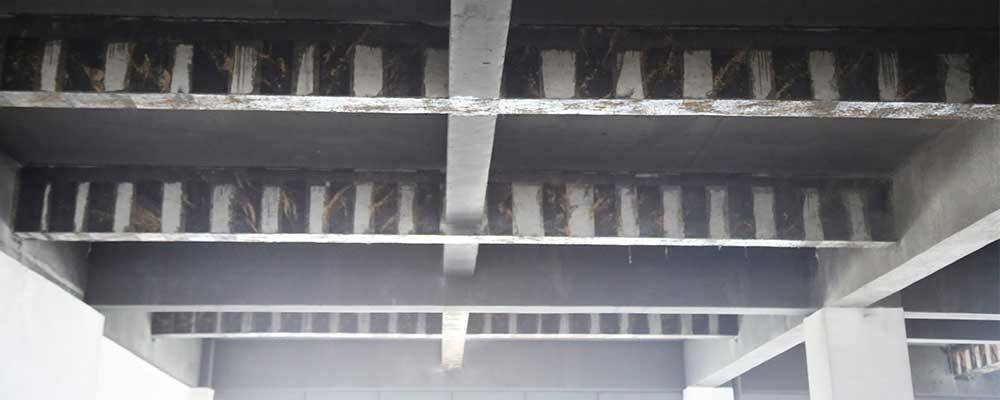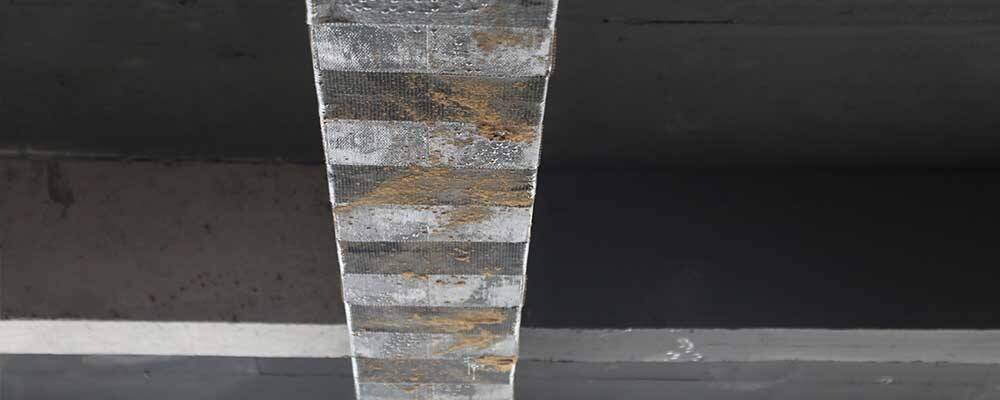Solutions
Horse Construction offers full range of structural strengthening materials with technical supports, documentation supports, products supports, project supports.
Carbon fiber reinforced repairing technology is another new type of structural strengthening technology after increasing concrete section and sticking steel. Carbon fiber reinforcement was first introduced into China from Japan, the United States and other developed countries, but due to its unique advantages, it has rapidly developed into the most common reinforcement method.

With the rapid development of China's economic construction and transportation, a considerable part of the existing buildings are left behind by the low design load standards at that time. Because of the change of the use function, some buildings are difficult to meet the requirements of the current standard use, and need to be repaired and strengthened urgently.
At present, there are many commonly used reinforcement methods, such as: enlarging section method, steel-encased reinforcement method, steel-bonded reinforcement method, carbon fiber reinforcement method, wire-wound reinforcement method and so on. Carbon fiber reinforced repairing technology is another new type of structural strengthening technology after increasing concrete section and sticking steel. Carbon fiber reinforcement was first introduced into China from Japan, the United States and other developed countries, but due to its unique advantages, it has rapidly developed into the most common reinforcement method.
1. Good mechanical properties of carbon fiber fabric
It is well known that the tensile strength of carbon fibers is very high. For carbon fibers cloth, the tensile strength should reach more than 3400 MPa, the elastic modulus 240GPa and the elongation rate is 1.6%. Tensile strength is 7 - 10 times that of steel, elastic modulus is similar to steel, and elongation is beyond comparison of steel. Because of the good mechanical properties of carbon fibers, they are widely used in flexural strengthening, shear strengthening and crack strengthening of structures.
2. Low density ratio of carbon fiber fabric
The density of carbon fibers is only 1.8g/cm, which is less than 1/4 of the density of steel. There is no increase in the weight of components during the reinforcement process.
3. Carbon fibre construction is simple and the construction period is short
Carbon fiber reinforcement can be directly pasted after the treatment of the base surface. There is no wet construction method, and the construction process is simple and fast.

4. Good durability of carbon fiber reinforcement
Carbon fibers have good corrosion resistance and aging durability, while epoxy impregnating adhesives matched with Carbon have passed the tests of moisture and heat aging resistance and long-term stress resistance, and the durability can reach more than 50 years.
5. The comprehensive cost of carbon fiber reinforcement is low
Although the cost of carbon fiber reinforced materials is relatively high, but because of its simple and fast construction and relatively low labor cost, it has a great advantage compared with the cost of bonded steel plate.
6. Carbon cloth reinforcement has great advantages in some narrow spaces.
Carbon fiber sheet itself is very thin, and relatively soft, can be winded, in some narrow position reinforcement has great advantages.
7. Carbon fibre reinforcement does not damage the original structure
In the process of CFRP reinforcement, only the reinforced base surface is polished without any other operation, which has little effect on the original structure.
You can find anything here you are in need of, have a trust trying on these products, you will find the big difference after that.

High strength, unidirectional carbon fiber wrap pre-saturated to form a carbon fiber reinforced polymer (CFRP) wrap used to strengthen structural concrete elements.

Good impregnation carbon fiber adhesive for applying carbon fiber reinforced polymer(CFRP) wrap for structural strengthening

High strength, unidirectional carbon fiber sheet pre-saturated to form a carbon fiber reinforced polymer (CFRP) sheet used to strengthen structural concrete elements.